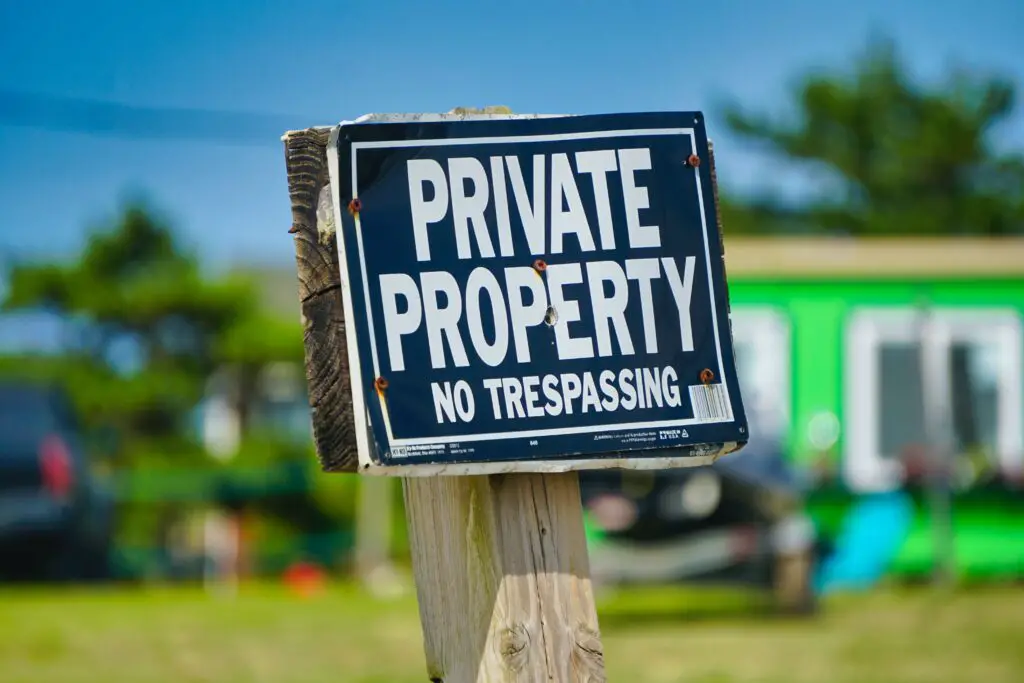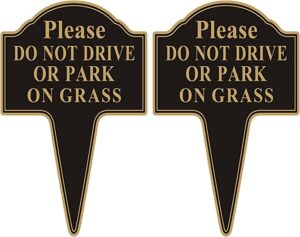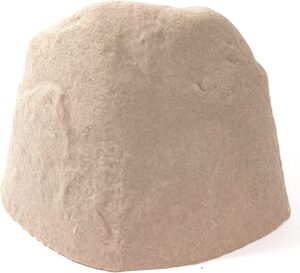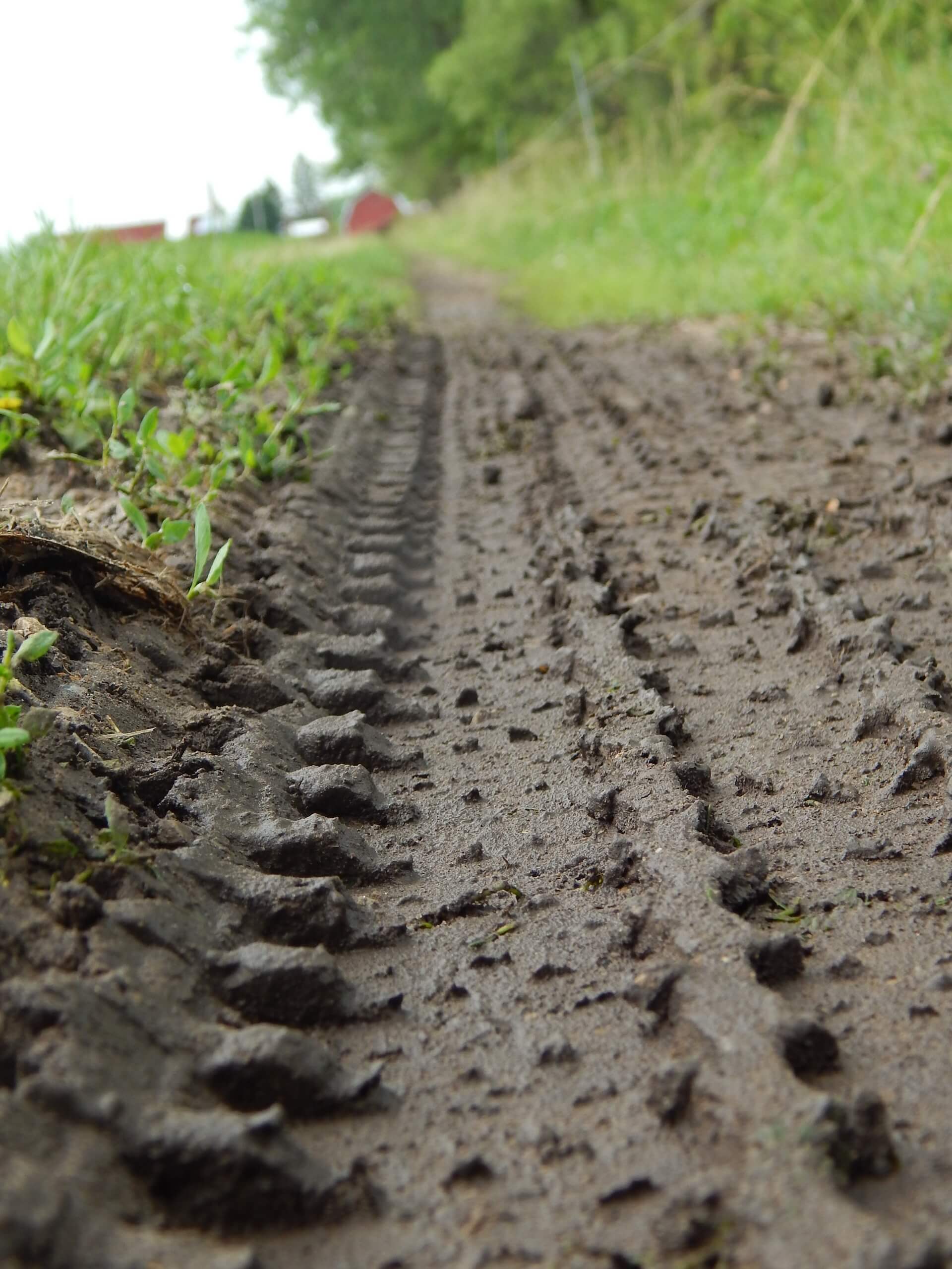Are you tired of the never-ending frustration of having an inconsiderate neighbour who just can’t resist driving over your pristine lawn? Sadly a lot of us have been there, and believe me, I understand your annoyance. ‘My neighbour keeps driving over my lawn’ is a common complaint. But fear not! In this blog, I’ll dive into the nitty-gritty of dealing with this pesky situation.
I’ll cover everything from understanding the problem to exploring legal considerations, mediation options, preventative measures, involving local authorities, seeking compensation, and more. So, buckle up and let’s put an end to the tire tracks on your beloved lawn!
Legal Considerations
Ah, the world of law – it can be a bit daunting, but fret not! I’m here to shed some light on the legal side of dealing with a neighbour who keeps driving over your lawn or grass verge.
Quick note, you should check that there if there is a right of way for your neighbour to use your lawn or grass verge in your property deeds. You should have a look at the paperwork that was provided to you when you purchased the property. If you are unsure you contact the solicitor who dealt with the conveyancing.
Here are some examples of laws that might apply if your neighbour keeps driving over your lawn:
- Trespassing
- Nuisance
- Property Damage
- Criminal Damage
- Harassment
Trespassing
Driving over someone else’s land, including a lawn or grass verge, without permission can constitute trespassing. Trespassing laws protect the rights of property owners and prohibit others from entering or remaining on their land without lawful authority.
Trespassing can be a civil offence, and the affected neighbour may have grounds to pursue legal action for damages. So, if your neighbour is consistently turning your beautiful lawn into their personal racetrack, they are crossing legal boundaries.
I have a blog on what to do if you find a neighbour trespassing on your land, that you can read here.

Nuisance
Driving over a neighbour’s land and causing damage may be considered a nuisance.
Nuisance laws aim to protect individuals from unreasonable interference with the use and enjoyment of their property. If the neighbour’s actions disrupt the affected neighbour’s peaceful enjoyment of their land, they may have a claim for nuisance.
For example, if your neighbour drives onto your land and leaks oil over your lawn this would affect your enjoyment of your garden and could be an environmental issue.
Property Damage
If the neighbour’s actions result in damage to the affected neighbour’s property, such as the lawn, fences, or landscaping, they may be held liable for property damage.
Laws related to property damage allow individuals to seek compensation for the harm caused to their property.
Criminal Damage
In some cases, if the neighbour’s actions involve intentional and malicious damage to the affected neighbour’s property, it may amount to criminal damage.
Criminal damage is a criminal offence under the Criminal Damage Act 1971, and the police may become involved to investigate and potentially prosecute the responsible party.
Harassment
Under the Protection from Harassment Act 1997, individuals have legal protection against harassment, which includes actions that cause fear, distress, or annoyance.
If the neighbour’s repeated actions of driving over the land and causing damage are accompanied by behaviours that create a hostile and intimidating atmosphere, it may constitute harassment.
For all of the above, it’s important to consult with a solicitor or legal professional to determine the specific laws and legal options that apply to your situation. They can provide advice based on the specific details of your case and guide you through the legal process if necessary.
If you don’t want to incur solicitors fees straight away, then you could consider contacting Citizens Advice.
What To Do If A Neighbour Keeps Driving On Your Lawn
“My neighbour keeps driving over my lawn” – If you find yourself saying this then try taking the following steps to resolve the issue:
Step 1 – Talk to your Neighbour
Start by addressing the issue directly with your neighbour in a polite and friendly manner.
Explain your concerns and ask them to refrain from driving over your lawn.
It’s possible they may not be aware of the impact their actions are having.
Step 2 – Follow-up Letter
If talking to your neighbour doesn’t improve the situation, I would recommend sending a follow-up letter.
In the letter, you can explain the issues and the damage they are causing and ask them to stop immediately. You can state that if they don’t stop and continue to cause damage, you will apply to the County Court for an injunction and claim damages for trespass and your legal costs.
The following might be of interest:
This will hopefully stop them.

Step 3 – Keep a Record
Keep a record of each instance where your neighbour drives over your lawn, noting the date, time, and any visible damage caused.
Take photographs or videos as evidence, if possible.
This documentation will be valuable if legal action becomes necessary.
Having a good quality security system can ensure you have evidence if your neighbour damages your property or lawn.
I would recommend installing a Ring Doorbell and home security cameras to capture the evidence.
I have an article on how to gather evidence for a neighbour dispute that you can read here.
Step 4 – Preventative Measures
If your neighbour keeps driving over your lawn and you don’t want them to cause any future damage, then you should install preventative measures.
You can use items such as large rocks, flower pots, a fence or barriers. It really comes down to your budget and how much you value the aesthetics of your garden.
See the section below for ideas on how to stop your neighbours from driving on your lawn or grass verge.
Step 5 – Contact The Authorities
If the situation worsens or becomes intolerable, you may need to involve the police or your local council.
You can report the incidents to the police if the actions amount to harassment or criminal damage. You can contact the council if the behaviour is a nuisance.
Provide them with the documented evidence you have gathered.
Step 6 – Mediation
If direct communication doesn’t resolve the issue, consider involving a neutral third-party mediator.
Mediation can help facilitate a productive conversation between you and your neighbour, to reach a mutually satisfactory resolution.
I have a blog on how mediation can help resolve a neighbour dispute that you can read here.
Step 7 – Legal Action
If the issue persists despite your efforts, seek advice from a solicitor or legal professional who specialises in property law or neighbour disputes.
Consult with your solicitor to explore options such as pursuing a civil claim for damages or seeking an injunction to prevent further trespassing.
Remember, each case is unique, and the appropriate steps may vary. It’s crucial to seek professional legal advice to ensure you understand your rights, obligations, and the potential consequences of each course of action.
Note: You should check your house insurance to see if you have legal expenses covered.

Preventative Measures – How To Keep Cars Off Your Grass
Now that we’ve explored the practical and legal options, let’s roll up our sleeves and take proactive steps to protect your lawn from any more unwanted tire tracks.
It’s time to get creative with preventative measures that will deter or block your neighbour from turning your turf into their personal racecourse.
Large Flower Boxes
You could put large flower boxes on your boundary to prevent your neighbour from driving on your lawn. These would be my preferred option as they are sturdy and they look good.
The Casaria Large Tall Rattan Flower Pot Planter is a great option because it is made in stylish rattan and tall enough that your neighbour can’t claim they didn’t see it.

This is a much cheaper way of stopping your neighbour driving on your lawn than having to seek legal advice.
Hedges
You could plant hedging around your border to stop your neighbour but unless you purchase a well-established hedge, it may be a slow process.
There is the possibility that your neighbour might drive over the hedge if they are not noticeable.
Signs
Another simple yet powerful tool is the mighty warning sign. Strategically placed “keep off the grass” or “no trespassing” signs can send a clear message to your neighbour that they are encroaching on your domain.
You can get inexpensive signs from Amazon, like this one.

Sometimes, a polite reminder is all it takes to put an end to lawn-driving escapades.
Artificial Landscaping Rocks
Large landscaping rocks, either real or artificial are a good way of stopping your neighbours as they won’t want to damage their car. Artificial rocks are a cheap alternative.
The Emsco Group 2183 Landscape Rock has a natural sandstone appearance and is a good option.

Fencing
One effective solution is to install fences that can create a clear boundary, making it crystal clear that your property is off-limits. Not only do these barriers act as a deterrent, but they can also enhance the overall aesthetics of your property. It’s a win-win!
Home Security Systems
Investing in home security measures, such as a Ring Doorbell and home security cameras can provide peace of mind and act as a deterrent to unwanted behaviour, such as a neighbour repeatedly driving over your lawn.

With features such as motion detection, two-way audio, and live video streaming, a Ring Doorbell allows you to monitor and record any activity on your property. This information can be valuable in identifying the source of the issue and providing evidence to support any legal action taken.
Implementing preventative measures to keep cars off your grass is essential for maintaining the integrity of your property and to avoid the issue escalating.
By installing physical barriers, such as fences or flower pots, you create a clear boundary that discourages vehicle access.
Adding warning signs can also serve as a visual reminder for neighbours to respect your property.
By employing these preventative measures, you can ensure that your grass remains lush and undisturbed.
Conclusion
In conclusion, we’ve covered a range of strategies and considerations to help you address the frustrating situation of a neighbour driving over your lawn or grass verge.
Remember, effective communication, documentation, and exploration of various options are key to finding a resolution.
It’s important to approach the issue with a proactive mindset, seeking amicable solutions before resorting to legal measures.
I hope by following the steps in this post, you will be able to stop your neighbour from driving on your lawn or grass verge.
Best of luck, and may your lawn be forever tire-track-free!






Leave a Reply